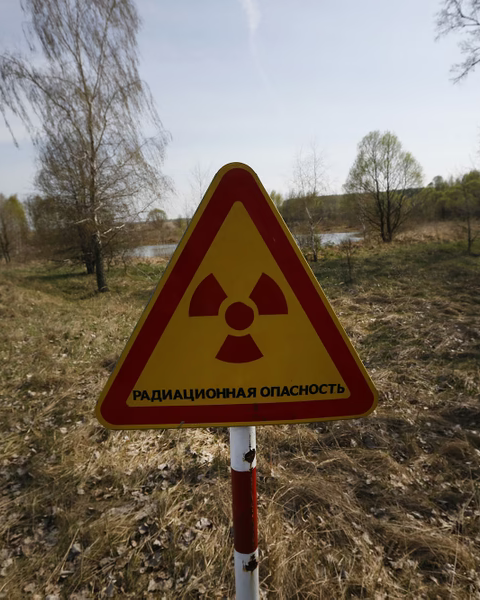
Dark Clouds over Minsk: The Polesie State Radioecological Reserve
By Emma Buchman, Magpie Editor
Emma Buchman is the director of March On Maryland, digital content director of March On Foundation, and editor of The Magpie. She also works as a writer and researcher at Studio ATAO. Emma has studied Chernobyl for over five years, focusing on the history of the accident and its liquidators. For three years, Emma also contributed to a website that collected information on the Chernobyl disaster, specifically sources contemporary to the time of the accident and memoirs from liquidators.
Part 3/11 of the series “On the Safety of Storks”
“The radioactive pollution was falling on Minsk. It was hot. Outside, people were selling pirojky, meat, ice creams, everything.
I went back to the Central Committee. Kusmin, the secretary at the Central Committee for Science, tried three times to get Slyunkov to see me. But he wouldn’t.
So I made up my mind: I went into the antechamber thinking, “This time, I’m going in. I’ll force my way into the office.” They might shout at me, they might chase me out, but I had no choice…
I saw Nil Gilevich, a well-known poet in Belarus. He came out, recognized me, said: “Hello, hello, how are you? I’ve had a really good talk with Nikolai Nikitovich [Slyunkov] about developing culture in Belarus…”
[I exclaimed,] ‘There won’t be anyone left to appreciate culture if we don’t evacuate the population straightaway!’”
–Academician Vasily Nesterenko, Chernobyl liquidator & former director of the Institute of Nuclear Energy at the National Academy of Sciences of Belarus
~~~~~~~~~~~~~~~~~~~~~~~~~~
The Chernobyl story has so many chapters and subchapters, it can be easy to overlook important elements of the story sometimes. This includes one of the most important characters in the Chernobyl saga: the impacted country of Belarus.
Belarus and Ukraine each share essentially half of the total expanse of the exclusion zone. While Ukraine has the unique challenge of having the ruins of the fourth reactor, Belarus suffered some of the worst impacts of the radioactive fallout. In Part 2, we stayed on the Ukrainian side of the Chernobyl Exclusion Zone to prevent confusion. This piece will focus specifically on the Polesie State Radiological Reserve in Belarus.
At its height, the Soviet Union spanned over 8,000,000 miles and had a population of over 286,000,000 people. Much of this vast conglomerate was acquired through colonialism and aggression. Since the Soviet Union’s dissolution in 1991, many nations previously colonized by Russia (the “ruling” nation of the Soviet Union) have been able to reclaim their heritage and sovereignty. Ukraine is a great example of that, right down to its stewardship over Chernobyl.
Some nations have either not had the resources to do this, or are still ruled by the same Soviet culture that oppressed them for generations.
Belarus, unfortunately, is an example of this latter situation. The Belarusian people suffer under a dictatorship that enables P*tin in his war against Ukraine and happily allows free reign of Belarus to do it.
At the very start of the war, you may remember reports of the Russian military invading Ukraine through its southeast border with Belarus – their border not only with Ukraine, but with the Ukrainian half of the Chernobyl Exclusion Zone. Russian soldiers then used Chernobyl as a staging ground for war atrocities like Bucha, traumatizing the staff and looting the grounds of the Zone along the way.
But Belarus is so much more than a footnote in Russia or Ukraine’s stories. One of many things that I appreciate about HBO’s 2019 series Chernobyl is how Belarus is squarely centered in the Chernobyl story through the character Ulana Khomyuk (played by Emily Watson). It completes the trinity of countries most impacted by the accident: Valery Legasov from Russia, Boris Shcherbina from Ukraine, and Ulana Khomyuk from Belarus.
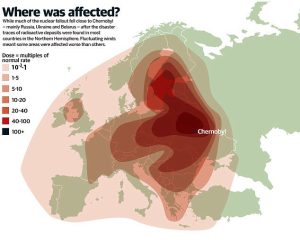
One of the primary inspirations for Khomyuk is Academician Vasily Nesterenko, a Belarusian physicist who served as the director of the Institute of Nuclear Energy at the National Academy of Science of Belarus at the time of the Chernobyl disaster. Nesterenko would eventually make his way to Chernobyl and serve as a liquidator. The most notable parallel between Nesterenko and Khomyuk, for those who are fans of the show, is referenced in the quote above: when the scientist essentially had to break down the door of the party leader to tell him that Minsk and Belarus as a whole were in danger.
History played out much like the series: Nesterenko was ignored, and he took matters into his own hands (a common theme in the Chernobyl story). Now, the entire country suffers the consequences of that decision, and the Belarusian government continues to be secretive about true radiation levels throughout the country.
When Chernobyl’s fourth reactor blew open, the radiation was largely dispersed by northerly and westerly winds. It was reported in the 1996 report, “One Decade After Chernobyl: Summing Up the Consequences of the Accident”, that Belarus received 70% of the radioactive deposits emitted in the accident.
The epicenter of radioactive contamination was a Belarusian town called Mogilev, over 200 miles away from the Chernobyl Nuclear Power Plant. Reuters reporter Nastassia Astrasheuskaya described the long shadow that a power plant so far away cast upon this Belarusian town:
The birth rate had begun falling steeply because people saw various defects in babies born after the disaster, and did not dare to have children of their own. I went to school with a girl who had arm defects.
It was scary but we got used to it.
As with most people living in Belarus after the accident, my thyroid gland was much bigger than normal. We lived under constant threat of getting thyroid cancer.
Belarus was the country most contaminated by the fallout from Chernobyl, and completely clean areas are still rare.
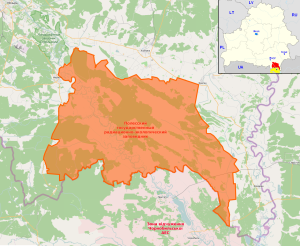
As you’ve already deduced, Belarus has its own zone of alienation as a result of the accident – a slightly smaller reserve called the Polesie State Radioecological Reserve (also called the Palieski State Radioecological Reserve). It’s not much safer than its neighbor in Ukraine (according to scientist Jim Smith and his co-authors of “Long-term census data reveal abundant wildlife populations at Chernobyl”, it’s only about 1% less contaminated than the Zone in Ukraine as of 2015).
While a part of the original 30-kilometer exclusion zone included Belarus, it was later expanded to encompass more radio
active territory. It now spans 2,162 km2 (835 sq mi) in southern Belarus. According to their website, “The Polesie State Ecological Reserve was established with the aim of implementing a set of measures to prevent the removal of radionuclides beyond its territory, studying the state of natural plant complexes, wildlife, conducting radiation-ecological monitoring, and conducting radiobiological research.”
Like their Ukrainian neighbor, wildlife has thrived at the Polesie reserve. In fact, Smith et al. also report that the wolf population in Belarus is seven times that of similar nature reserves in Belarus. Their flora and fauna is very similar to that of the Chernobyl Exclusion Zone, including extinct or endangered species like Przewalski horses. It is the largest nature reserve in Belarus, and one of the largest in Europe.
There are other projects being worked on in the reserve: plant nurseries, a farm where they breed Russian draft horses, bee apiaries, experimental agricultural fields, and three wood processing sites. If you think it’s a little odd (dangerous) that they created wood processing plants, I did too: the Belarusian government is responsible for that, and other attempts to drive business in contaminated areas.
So, now you know the territories we’re talking about, and for the next two parts in the series, we’ll be focusing on whether or not any of what they do in zones of alienation are safe or even a good idea. As we move forward, there are two important parting notes to recognize:
First, sometimes when people refer to the Chernobyl Exclusion Zone, they’re referring to the ENTIRE area, Belarus included. Other times, they’re referring only to the Ukrainian side. If the article or paper has a historical focus too, sometimes the original 30km zone will be referred to as an exclusion zone. It was even confusing to me as I was researching (so… so confusing).
So, when we talk about the Exclusion Zone, sometimes they mean both, sometimes they mean one or the other. Sometimes they’re specific, sometimes they’re not. If you find yourself confused, pay attention to the sizes they give: if it’s in the ~2,000km range, they’re referring to one or the other. If it’s in the ~4,200km range, they’re referring to the entire exclusion area in both countries.
Bottom line: both Belarus and Ukraine have responsibilities and stewardship over Chernobyl, and these twin exclusion zones unite these nations not just in their tragic past, but also its revival.
Secondly, please respect the lived experiences of those who live in the fallout areas. We don’t fully understand Chernobyl, not even the scientists most familiar with it. While everyday folks in Belarus may not have the same scientific training, they do have a different kind of training: LIVING WHERE CHERNOBYL HAPPENED, EVERY DAY. They deserve so much more respect, and their lived experiences deserve to be heard.
We stand in hope with Belarusians the world over who await a Belarus run by and for its people. We look forward to seeing you again in December in Part 4 (trust me, this one is a DOOZY).
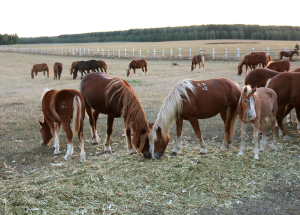
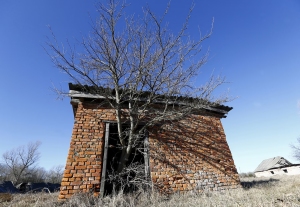
Further reading:
- “Belarus’s Chernobyl taboo”
- “The True Toll of the Chernobyl Disaster”
- “Witness: Growing up in Chernobyl’s fallout zone”
Additional image credits:
Featured image: Sergei Grits / AP